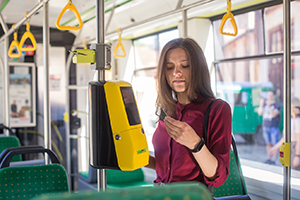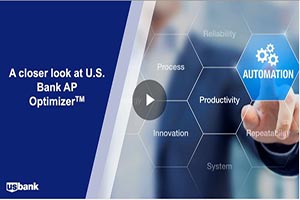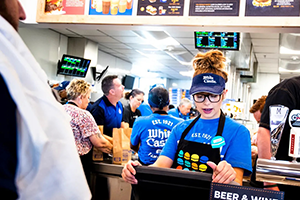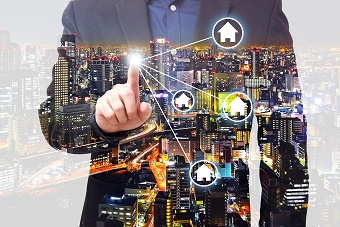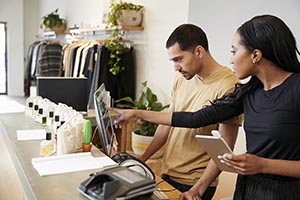It may take years to calculate the lasting impact of COVID-19 on American business, yet it’s clear that a dramatic shift in the payments landscape started in the early weeks of the pandemic. With offices locked down and workers sent home, most businesses converted to mobile payment processes almost overnight, accelerating a move towards digitization and automation that had been coming for some time. And if there’s a silver lining, it’s that sectors where digital adoption had been slowest – like commercial real estate – had the most to gain from the digital transformation. In fact, the sudden preference for digital rent payments created a wave of unexpected opportunities for business to business (B2B) landlords the increased throughout the recovery.
Moving the payment process from the pandemic to the future
The dynamics of B2B rent payments changed dramatically when the COVID-19 lockdowns began, turning the traditional paper rent check into a burden for both landlords and tenants. Printing checks became difficult for many tenants, while processing and depositing them became just as troublesome for landlords. Digital options like ACH and credit card payments solved those initial problems and opened a window into the types of efficiencies digital payments make possible.
“They could streamline the entire payment process with technology, create efficiency in accounting, and get rid of the paper item altogether, not to mention the benefits of digital payments for fraud prevention and risk reduction,” says Dhiren Patel, Senior Vice President and Head of CRE Deposit & Payment Solutions for U.S. Bank Commercial Real Estate.
“That’s the beauty of a tenant portal like Versapay,” he explains. “The tenant payment, the delivery of statements and billings, the accounting, and the deposit are all processed digitally, like most consumer payments, so there is a tremendous opportunity to drive automation and increase efficiency from end-to-end. They’re also better positioned to ride out any uncertainty in the future as now they are enabling tenants to pay from anywhere, and for them to accept and process payments from anywhere, at any time.”
Ironically, many commercial real estate companies migrated their own payables to digital solutions long before the crisis, moving to virtual cards and ACH over the past five years. They understood the efficiency and advantages of digital payments, yet concern that tenants might be resistant to adopting a digital platform still kept them from going digital for accounts receivable (AR). Until the world changed.
The history of B2B rent payments
Digital payments are actually common in most industries, even Business to Consumer (B2C) real estate, where they account for the vast majority of rent payments in the multi-family and self-storage asset classes. The benefits of digitization are obvious, since paper payments are expensive to process. They cost time and money to record, transport, and deposit, whereas a digital payment can be automated to reduce those expenses virtually from beginning to end. On top of that, with integrations between tenant portals and enterprise resource planning (ERP) systems, digital dashboards can create real-time visibility throughout the processing.
Still, most B2B rent payments stuck to a more traditional script. “Tenants in retail and office properties were accustomed to sending a check because their landlords had built an entire AR process around a check being sent to a lockbox,” Patel explains. “The process to recognize who paid and to apply the cash into the accounting system was all super manual, but it was something that always seemed to work. It was inefficient and costly, and human processing led to human errors, but clients were hesitant about disrupting that process.”
Of course, that disruption occurred independently, but it also created unexpected advantages for the companies that were disrupted. Rather than piloting something new, they’re receiving the benefits of technology that has been refined and tested over time. In fact, some tenant portals and ERP systems have seamless integrations via application programming interface (API).
“The integration between a portal like Versapay and the ERP system is so strong that you can truly drive efficiencies and cost saving that you would not be able to drive without the combination of that integration and the level of technology that is now available,” Patel explains.
Preparing for the next step in payment digitization
The roadmap of transition varies from business to business. Some are slowly adding to their first stages of digitization while others have quickly pushed for end-to-end integration. Still, the lessons learned from the early days of the crisis are instructive.
“Clients that were already on the path of innovation and automation before the crisis, had an easier task,” Patel says. “If you already had the ball on the 50-yardline, it’s easy to keep it moving along. You have the foundational items already in place. You've maybe bought into it culturally. Executive management might be behind it.”
Landlords that had an existing tenant portal or other means of accepting rent payments simply needed to communicate those capabilities with their tenants to take full advantage of them. "The first line of defense in any situation that disrupts business at scale is communication. Landlords who were already using Versapay were able to quickly and efficiently communicate with their tenants as soon as the world went into lockdown," explains Chad Nicholson, Director of Strategy at Versapay. "Our clients used the Versapay platform to let their tenants know about waived late fees, rent deferrals and other relevant information."
Non-digital landlords who needed to jump-start their transition on the fly are in a different position. They should now re-evaluate those newly created processes, both to secure their digital foundation for any future lockdowns and to identify opportunities for further automation and efficiency.









